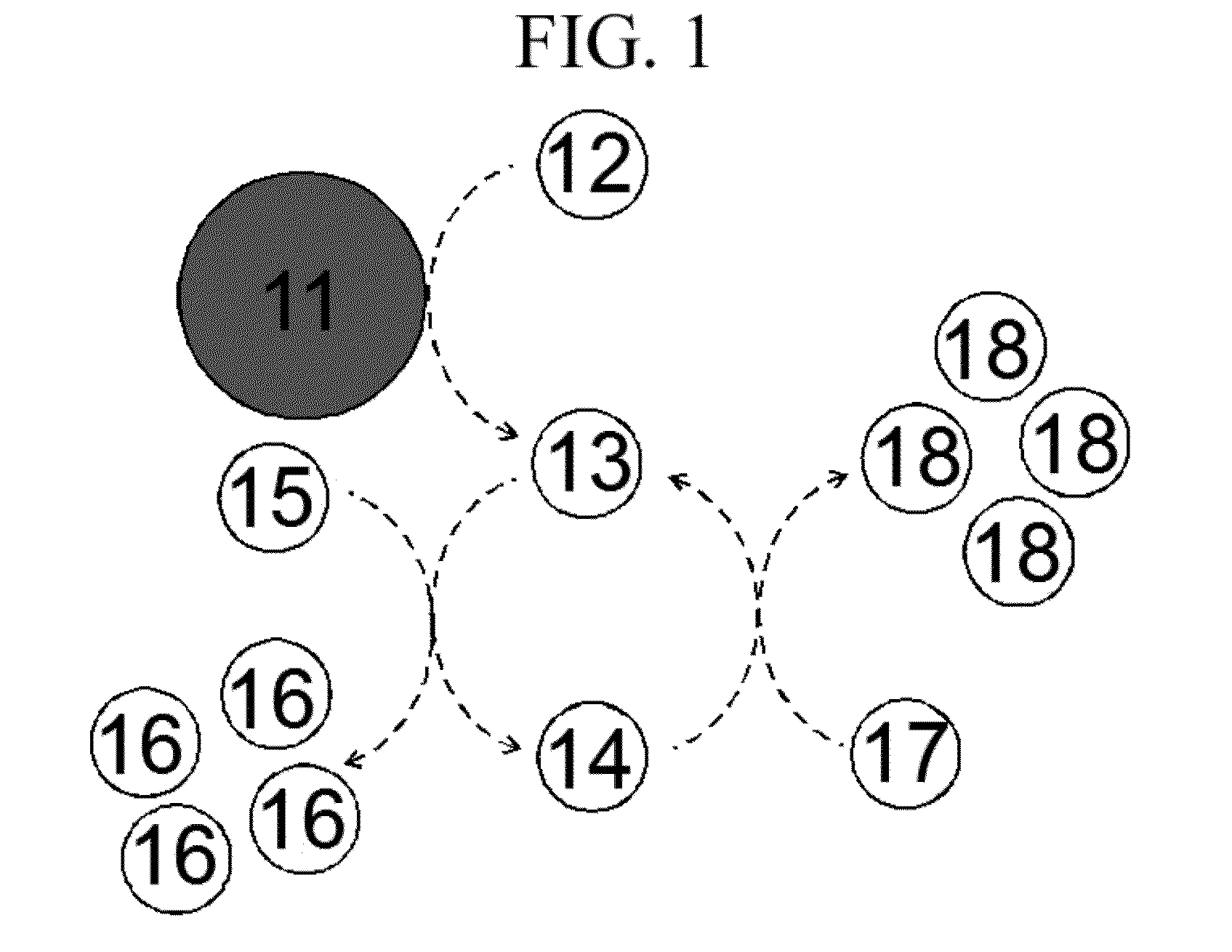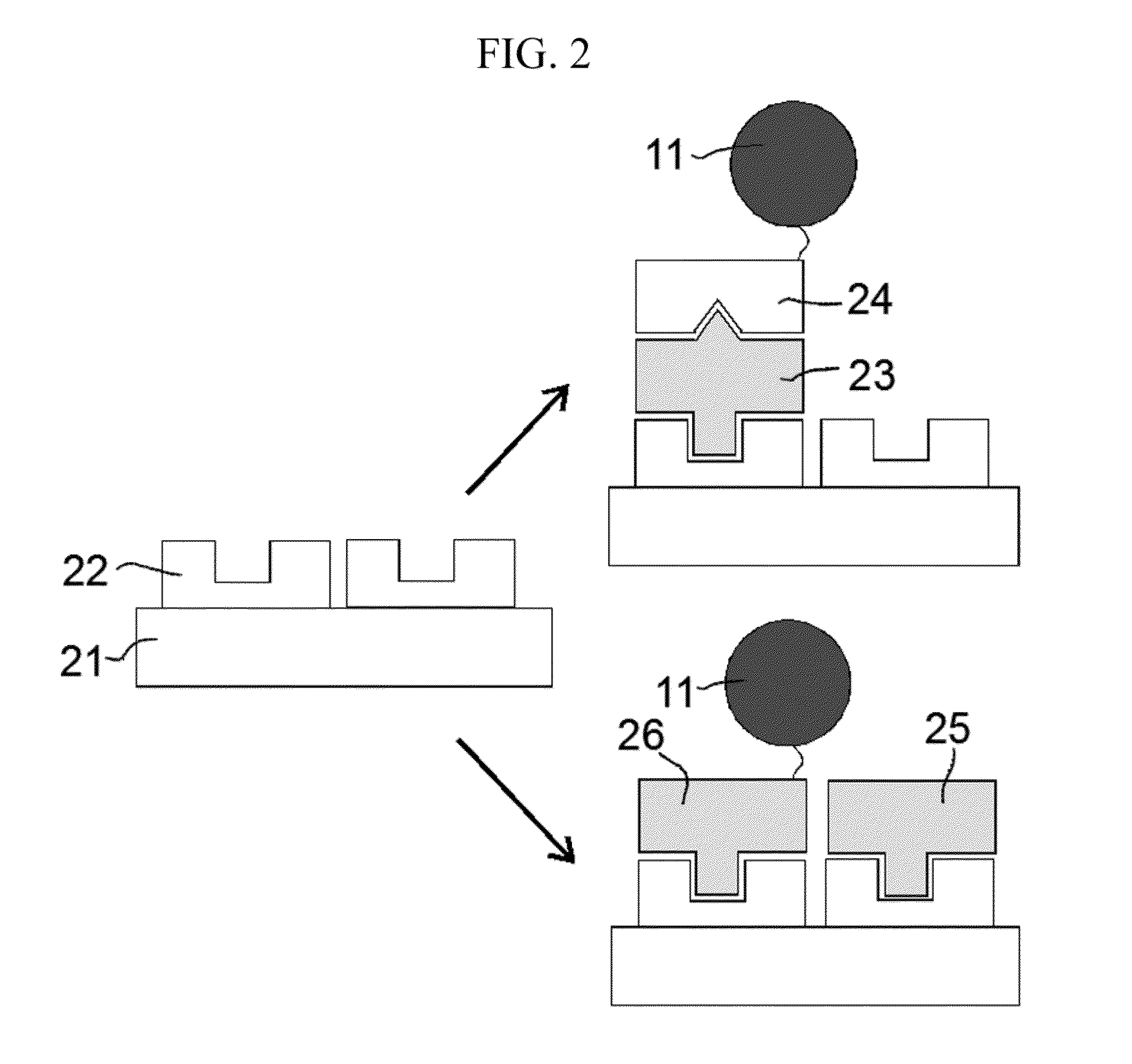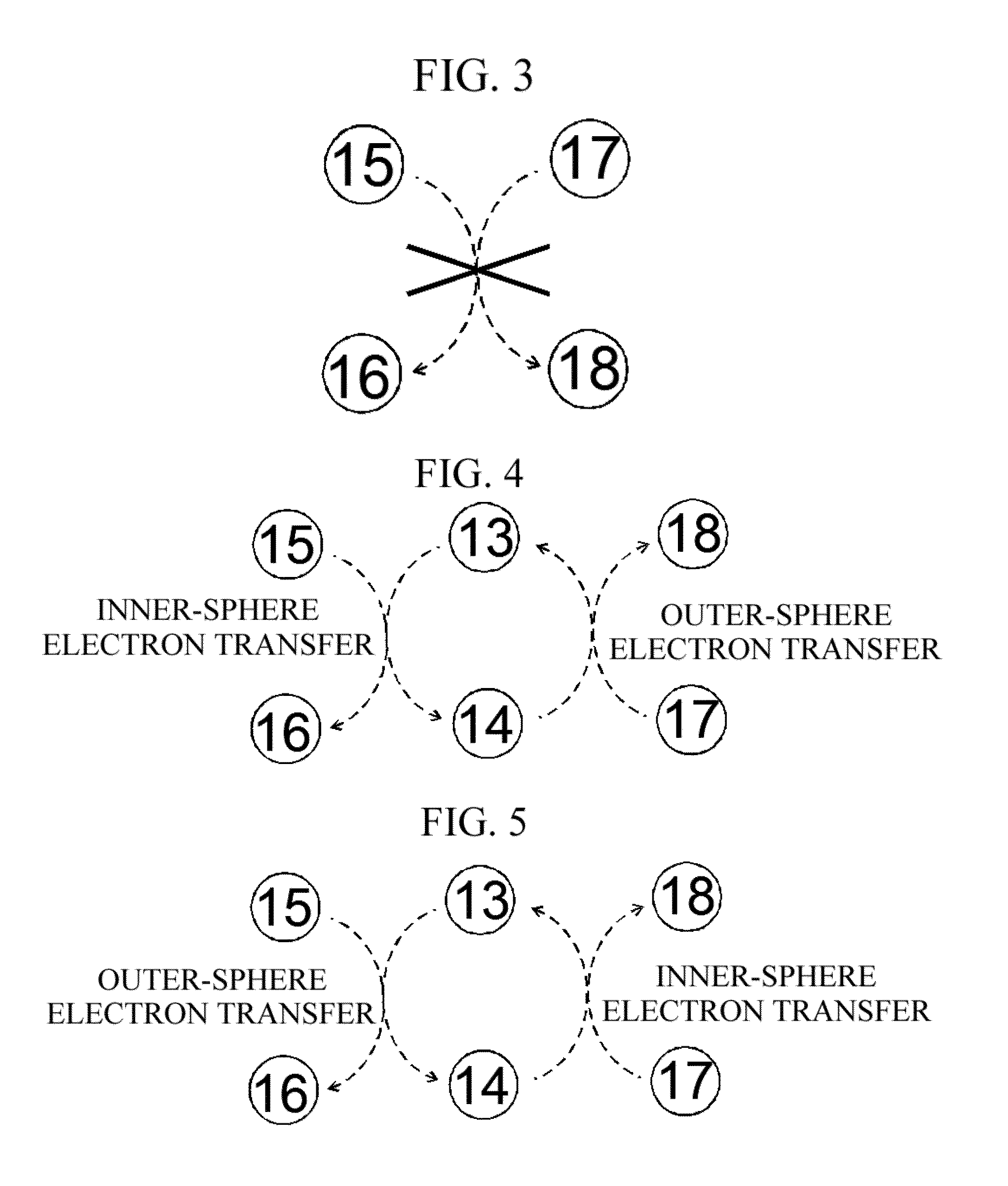Biosensor using redox cycling
a biosensor and redox cycling technology, applied in the field of biosensors, can solve the problems of increasing background current, abundant production, and becoming impossible to obtain a low background level, and achieve the effect of quick chemical-chemical redox cycling and slow reaction sta
- Summary
- Abstract
- Description
- Claims
- Application Information
AI Technical Summary
Benefits of technology
Problems solved by technology
Method used
Image
Examples
Embodiment Construction
[0058]Hereinafter, exemplary embodiments will be described with reference to accompanying drawings.
[0059]FIG. 25 is an example of a biosensor which is presented by the present invention. FIG. 25 illustrates a concept view of an electrochemical biosensor in a sandwich form, which detects troponin I. Avidin is applied on an ITO electrode, and an antibody in which troponin I may be captured by a biotin-avidin bond is immobilized thereon. After troponin I to be measured is captured on the surface, an antibody with which phosphatase is conjugated is bound to troponin I. When the electrode is immersed in a solution containing aminophenyl phosphate, aminophenyl phosphate is converted into aminophenol by phosphatase. When the enzyme reaction occurs for a certain period of time, aminophenol is produced in a large amount. When aminophenol is produced, redox cycling occurs by means of Ru(NH3)63+ and tris(2-carboxyethyl)phosphine, so that Ru(NH3)63+ is produced in a large amount. When Ru(NH3)63...
PUM
 Login to View More
Login to View More Abstract
Description
Claims
Application Information
 Login to View More
Login to View More - R&D
- Intellectual Property
- Life Sciences
- Materials
- Tech Scout
- Unparalleled Data Quality
- Higher Quality Content
- 60% Fewer Hallucinations
Browse by: Latest US Patents, China's latest patents, Technical Efficacy Thesaurus, Application Domain, Technology Topic, Popular Technical Reports.
© 2025 PatSnap. All rights reserved.Legal|Privacy policy|Modern Slavery Act Transparency Statement|Sitemap|About US| Contact US: help@patsnap.com



